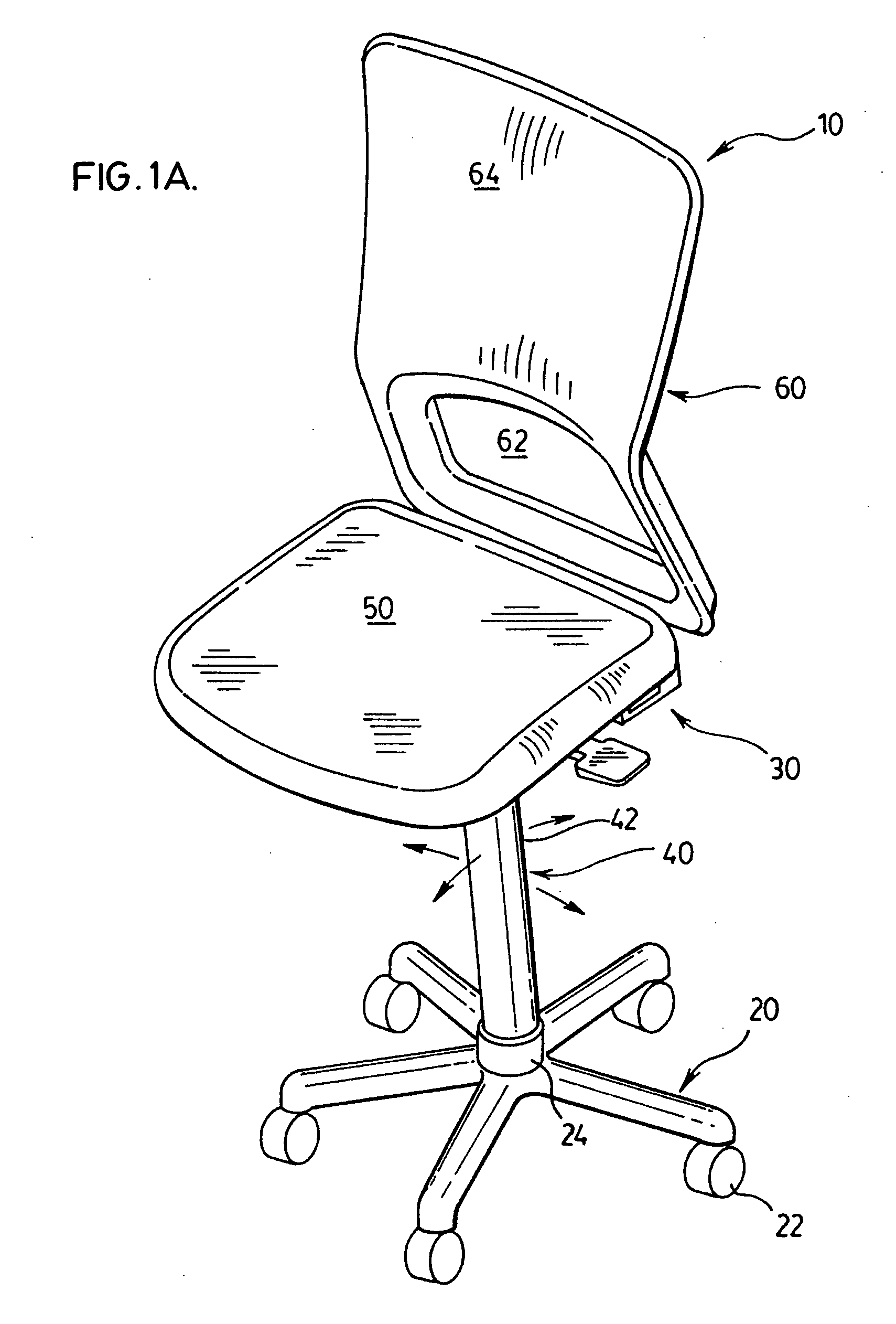Tiltable chair accommodating male and female user seating position preferences
a tilting chair and user technology, applied in the field of tilting chairs, can solve the problems of the inability to move in place while sitting, and the difficulty of chair designers to address the reach problem without compromising the comfort or safety of the occupant, so as to achieve the effect of more freedom of movement for the user
- Summary
- Abstract
- Description
- Claims
- Application Information
AI Technical Summary
Benefits of technology
Problems solved by technology
Method used
Image
Examples
Embodiment Construction
[0038] A preferred embodiment of the chair 10 is shown in FIG. 1. The chair 10 is a tilting chair, as shown in FIG. 1A, which tilts proximate to the base 20. The chair 10 is preferably an office chair. The base may include legs and wheels 22 as shown or may be stationary. A variety of base configurations are possible.
[0039] A tilt mechanism 24 is located proximate to or within the base 20 which permits the pedestal 42 in the pedestal portion 40 to tilt to circumscribed degrees in all directions. The tilt mechanism may include a resilient element (such as a rubber ring—not shown) which cushions the pedestal 42 as it tilts with respect to the mechanism 24 and returns the pedestal 42 to neutral orientation when tilting force is removed. In addition, the mechanism may include a tilt delimiter (not shown), which may take the form of a keyhole in which the pedestal end is contained to circumscribe the degrees of tilt, especially for preventing excessive tilting in certain directions that...
PUM
 Login to View More
Login to View More Abstract
Description
Claims
Application Information
 Login to View More
Login to View More - R&D
- Intellectual Property
- Life Sciences
- Materials
- Tech Scout
- Unparalleled Data Quality
- Higher Quality Content
- 60% Fewer Hallucinations
Browse by: Latest US Patents, China's latest patents, Technical Efficacy Thesaurus, Application Domain, Technology Topic, Popular Technical Reports.
© 2025 PatSnap. All rights reserved.Legal|Privacy policy|Modern Slavery Act Transparency Statement|Sitemap|About US| Contact US: help@patsnap.com



